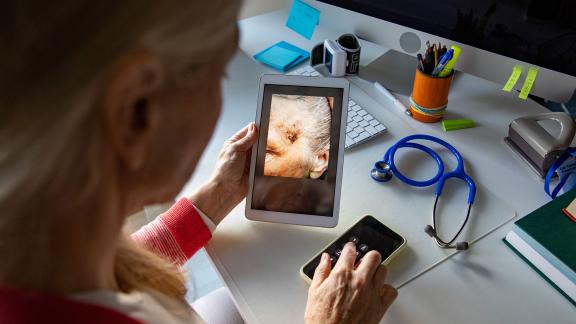Digital health post pandemic

The pandemic has meant quickly adopting digital solutions for healthcare, but simply digitising what we already do isn’t always the answer.
While COVID-19 has necessitated accelerating digital solutions for healthcare, Wendy Lane, consultancy services director at NHS Arden & GEM, argues that digitising what we already do isn’t always the answer. But, at the same time, we should harness our newfound sense of innovation.
Digital healthcare took a huge leap forward during the COVID-19 pandemic – but the potential for change existed long before then. Emergency circumstances removed some traditional barriers and temporarily changed clinical acceptability thresholds. But rapid solutions are not always the right solutions long term and some quick fixes will need to be reviewed. In doing so, how do we harness our new-found agility and lock-in progress?
Breaking down barriers
Three main changes propelled digital healthcare forward during the pandemic:
- Practical changes to information governance allowed data sharing to identify at risk patients, enable shared-care records and set up virtual wards. This compromise will hopefully set the tone for a more pragmatic approach going forward, balancing protecting patient data with enabling much-needed innovation.
- Huge improvements in core NHS IT infrastructure means many healthcare workers are benefitting from updated computers and access to shared systems and video conferencing.
- Many people have become more accustomed to digital interaction, both professionally and personally, as getting together has largely been replaced by video calls. However, we must be mindful not to exclude those for whom connectivity and affordability barriers continue to prevent access to technology.
A dose of realism
The NHS is not new to digital innovations that improve efficiency and free up resources. Examples include capsule endoscopy, which was successfully piloted in Scotland pre-pandemic, home testing kits that aim to pick up early signs of chronic kidney disease, and remote monitoring systems designed to help people manage long-term conditions at home.
But in some cases, progress pre-pandemic was painfully slow, with new pilots often overly bureaucratic to set up. In its recent white paper, Integration and Innovation: Working Together to Improve Health and Social Care For All, the government has recognised the need to strip back needless bureaucracy and capitalise on the creative and innovative approaches adopted during the past year. But that doesn’t mean it’s all systems go on digitalisation. Stay agile – yes. Innovate with confidence and be prepared to fail – absolutely. But let’s not mistake rapid ‘sticking plaster’ solutions for long-term change. The digital pendulum may have swung right across during COVID-19, but to deliver holistic, accessible and sustainable care, we need it to rest somewhere between the pre- and peak-pandemic approach to change.
Patient-centred progress
Experience tells us that personalised care is more cost efficient and results in a better quality experience for patients. For some, email, phone or video consultations will have worked brilliantly, and they may not want to go back to sitting in waiting rooms or circling hospital car parks searching for a space. But for others, the digital service hasn’t measured up – research by the Health Foundation shows that 42 per cent of members of the public interviewed said technology-enabled approaches made for worse quality of care than traditional models.
As a necessary consequence of the pandemic, we’ve lost the opportunity to co-design care – instead, we’ve largely transferred traditional methods online. Yet one of the success stories of this pandemic has been the coming together of health and social care staff and community volunteers. The public has become part of our extended workforce, so why not invite them to contribute to our next steps in more modern, flexible ways? Crowdsourcing ideas and expertise from our communities will help pick up on crucial aspects of care that could inadvertently be lost in a digital design, such as the supportive conversation a nurse may have with a newly diagnosed cancer patient as they walk them out of the clinic, which may identify the need for additional support.
In our enthusiasm for innovation, we must be careful not to design out the most human elements of our care. Understanding and proving what technology is capable of doing and maximising that functionality is vital but must be balanced with a recognition of what makes for a quality conversation – the soft skills and compassionate behaviours which are an integral part of care delivery. We shouldn’t be trying to make every patient interaction a video call just because we can.
Evaluation will continue to be key in moving digital healthcare forward – but that too could be more agile. Drawing on the learning from the Global Digital Exemplar programme, let’s look at evaluating new pilots as they go along; tweaking, improving or removing them with learning shared across the NHS. Place-based integrated working lends itself to trialling small-scale innovations, with integrated care systems taking the lead in sharing best practice to accelerate progress across regions.
There are no simple answers here, but if we try too hard to find the perfect solution, we will be back to where we were pre-2020. Let’s have the confidence to innovate but recognise that we will need to do more than simply digitise what we currently do, and that input from our patients and our communities is key to our future success.
Wendy Lane is consultancy services director at NHS Arden & GEM CSU. Follow them on Twitter @ardengem


